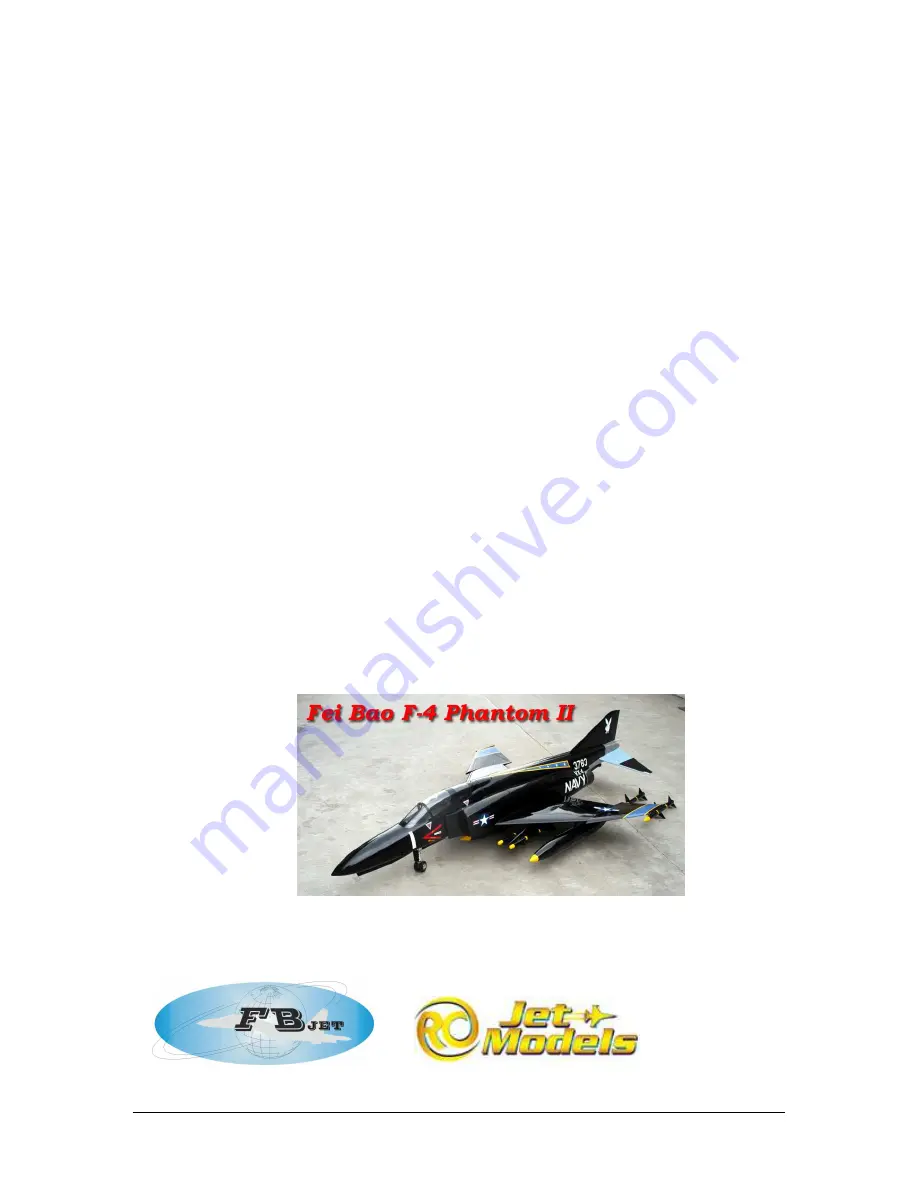
19
19
19
19
Set the Center of Gravity approximately 290 mm rear of the leading edge of the wing. The
CG should be determined after the plane has been filled and drained of fuel, with the gear in
the extended position.
It is likely that nose weight will be required. One easy way to accomplish this is to tape the
required lead weight to the end of a basswood stick and insert fully to the front of the nose.
Secure the basswood piece to one side of the front former with a screw. This will make it
easy to remove and reinsert the ballast weight as you fine tune CG.
Flaps, rudder and elevator should be set to maximum servo throws possible without binding
for the first flights. Elevator throw will be in the 45-50 mm range in both directions. Set the
elevator for a small amount of up trim for the initial flight.
Aileron throw should be approximately 40 mm in each direction for the first flight. Adjust this
in subsequent flights to suit your flying style.
Maintenance Tips:
To keep the stabs from moving during transport, wedge pieces of scrap foam between the
stab and fuse sides.
Remove the lower stab cover occasionally and inspect the stab mounting bolts for security.
Check the stab for excessive play before each flying session.
Inspect the inner door cylinder bolt each time you mount the wing.
When inverting the aircraft, put a short piece of fuel tube with a plug on the drain fitting.
This will prevent fuel from leaking into the missile rail channel and then into the seam
between the forward and rear fuselage sections.
Cycle the gears before each flying session, checking for binding and proper door operation.
Check the struts for play, indicating the clamping set screw needs to be tightened.
Congratulations, you have completed construction on your Fei Bao F-4
Phantom II. See step 17 for balance and control throws.

































